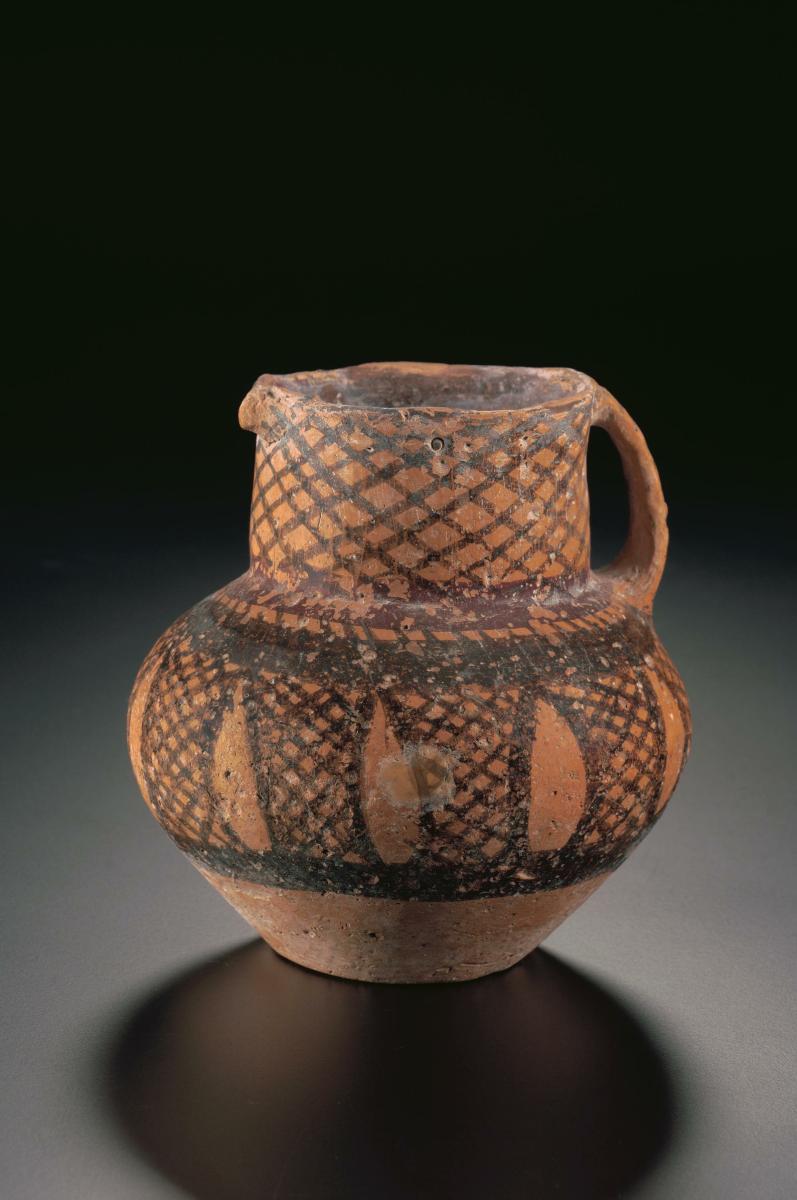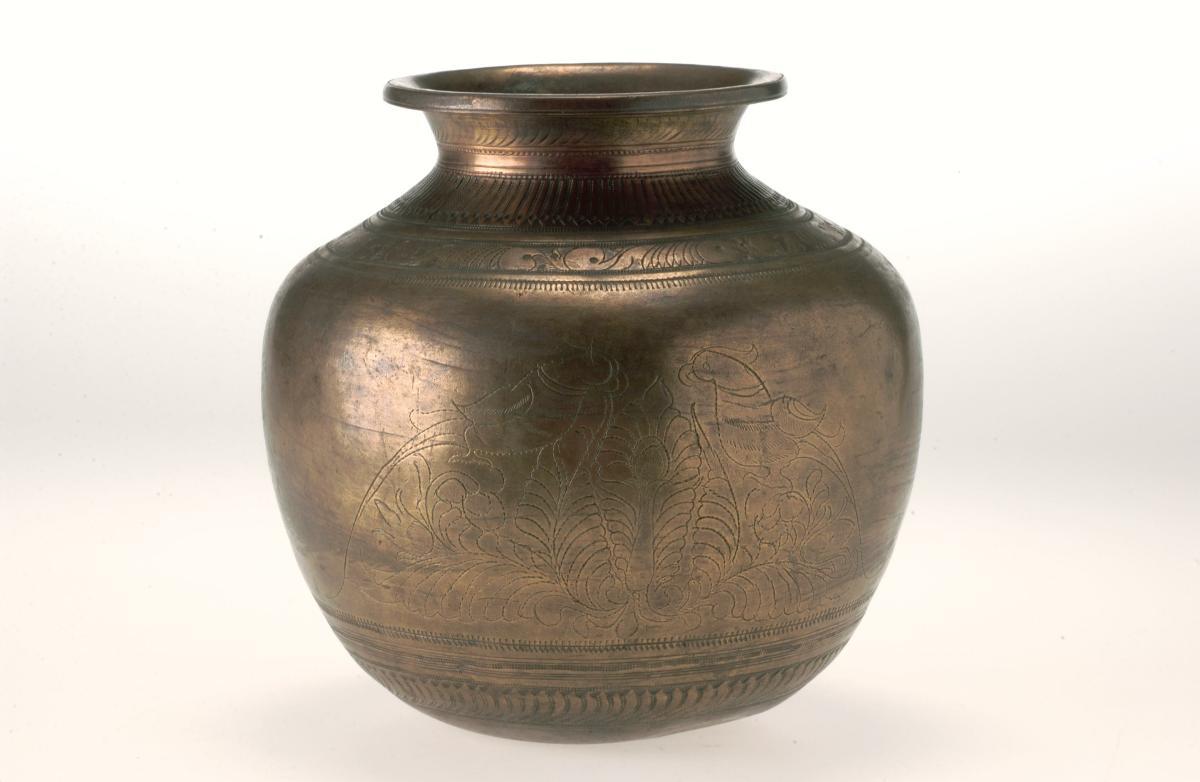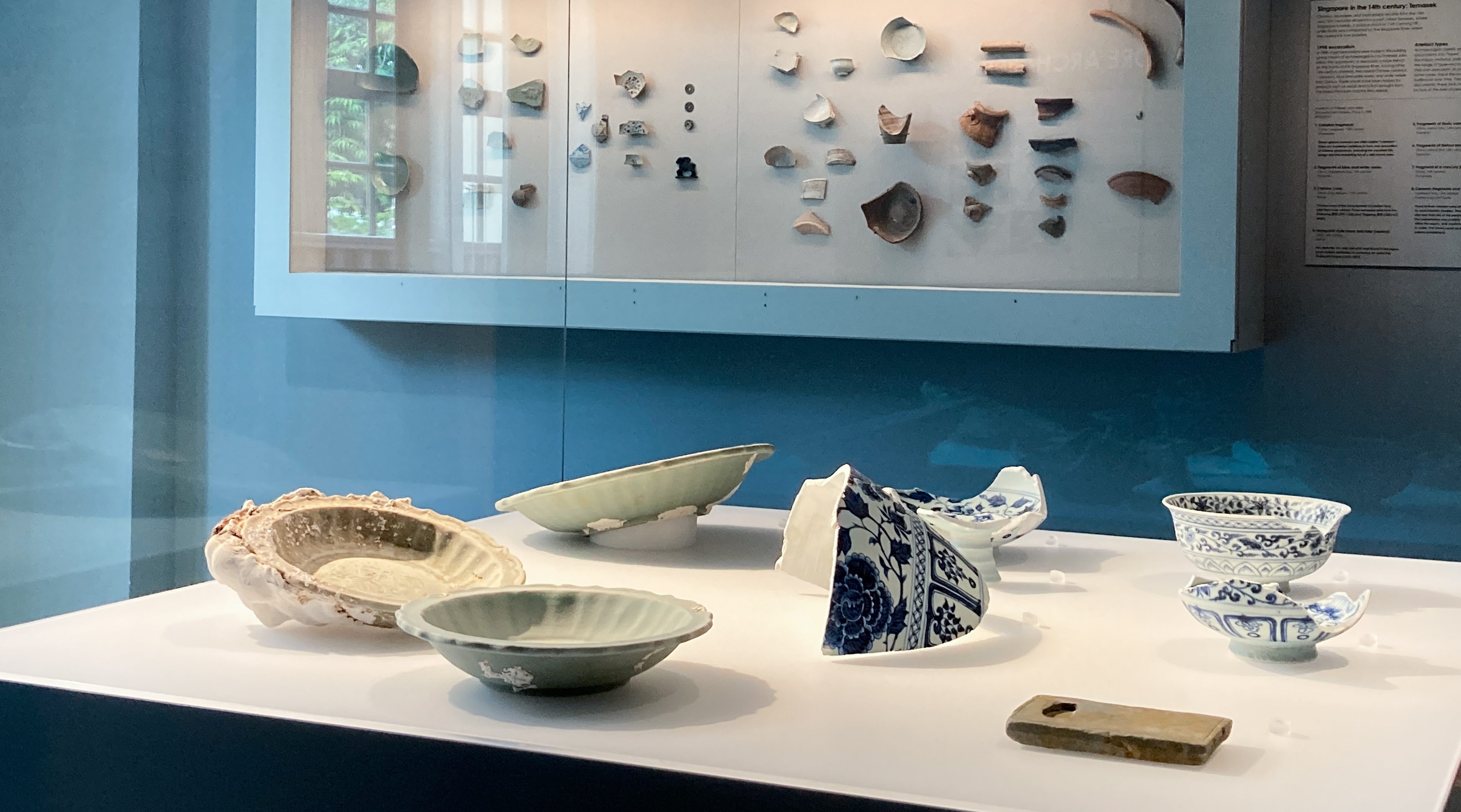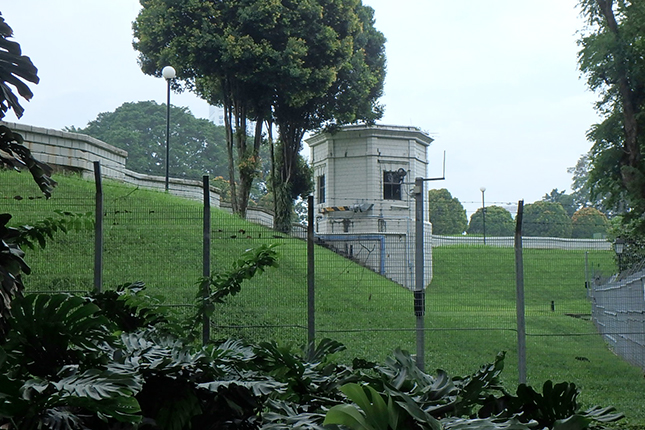x Rim: Dia8.0 cm
This tall-necked, flat-bottomed jar has a handle that stems from the mouthrim to the bulbous body. The outer surface is painted with a cross-hatching motif. The colour of the body which contrasts with black decoration, illustrates typical features of early Majiayao ceramics.This type of ware is known as Banshan ware. Banshan is an area in the present-day Gansu province in northwestern China, where pottery of this kind was first found. The Banshan culture developed out of several early societies that existed during the Neolithic period (c.6500-1900 BCE), before metal came into use.The Majiayao culture previously known as the Gansu culture or Majiayao phase of the Yangshao culture spread into Gansu, Qinghai and Ningxia provinces along the upper Yellow River basin. About 90% of excavated pottery found at burial sites of these provinces are painted.


















